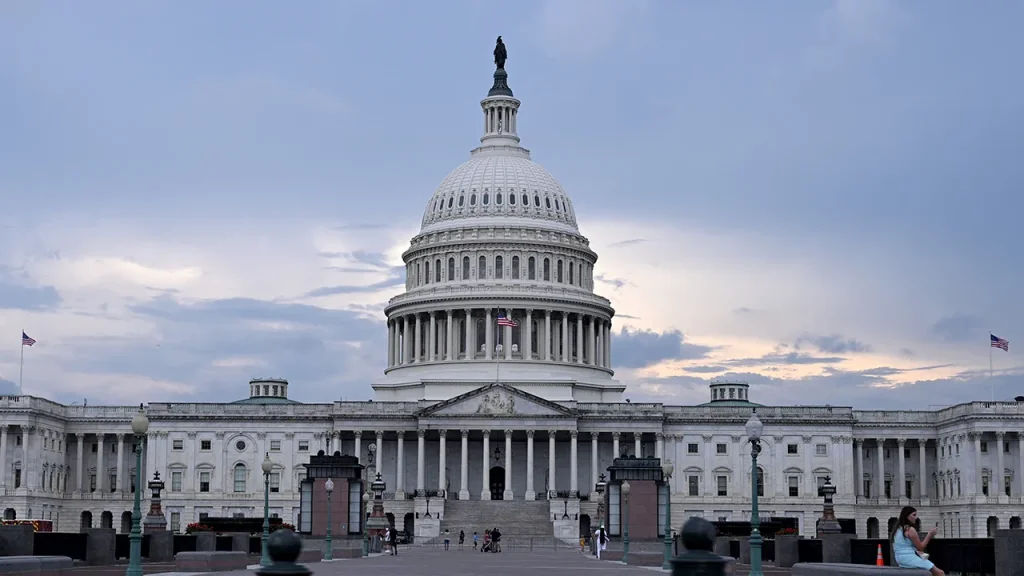The Looming Government Shutdown: A Political Chess Game with High Stakes
In the aftermath of a record-breaking 43-day government shutdown this fall, Washington is far from achieving stability. Rather than resolving the core issues that led to the initial crisis, lawmakers have merely kicked the can down the road, setting up what could be an even more contentious confrontation when the current funding expires on January 31st. The political theater that unfolded in recent months may be just a preview of a more dramatic showdown in the winter, with legislative, policy, and political obstacles creating a perfect storm of dysfunction.
Despite passing an interim bill to reopen the government, Congress has only managed to fund three of the twelve appropriations bills necessary to keep the federal government running through the end of the fiscal year (September 30, 2027). The approved funding covers the Legislative Branch, Military Construction/VA programs, and the Department of Agriculture. However, these three bills represent nowhere near a quarter of all congressionally-controlled spending, as more than half of such expenditures are directed toward the Pentagon alone. This means lawmakers must pass the remaining nine bills in just over two months to avoid another shutdown—a daunting task considering Congress is currently on recess and will take additional breaks for Christmas and New Year’s. Given their failure to address these same issues during the summer months, there’s little reason to believe the outcome will be different this time around, especially with contentious policy matters embedded within the individual bills.
The “Labor-H” bill, which funds the Departments of Labor and Health and Human Services, presents particularly thorny challenges. Political battles over policies promoted by Health and Human Services Secretary Robert F. Kennedy Jr. regarding vaccines and other health matters will likely intensify partisan divides. But the real flashpoint remains the extension of Obamacare health subsidies—the very issue that prompted Democrats to oppose funding the government in September. Senate Majority Leader John Thune has promised a vote related to extending these tax credits, which help offset rising healthcare premiums, but the details remain unclear. The Republican response has fractured, with some like Representative Marjorie Taylor Greene surprisingly embracing the subsidies, others seeking reforms to the program, and hardline conservatives viewing this as an opportunity to finally dismantle Obamacare after years of failed attempts. Adding to the complexity, President Trump has threatened to veto any bill extending the subsidies, potentially setting up another shutdown unless Democrats abandon the stance they took this fall.
The political consequences of another government funding crisis could be catastrophic, particularly for Democrats. If most Democrats again refuse to fund the government without healthcare subsidies, but enough break ranks to join Republicans in passing a funding measure, the resulting internal conflict could tear the party apart. Such a scenario would likely trigger calls for the removal of Senate Minority Leader Chuck Schumer and House Minority Leader Hakeem Jeffries, despite their alignment with the majority of their caucus on the healthcare funding issue. This infighting could erupt just as Democrats are positioning themselves for the 2026 midterm elections, where they see significant opportunities to regain control of the House and potentially make gains in the Senate. The timing couldn’t be worse for a party that needs to present a united front to capitalize on these electoral opportunities.
Republicans, however, aren’t immune to political fallout from shutdown politics. By resisting Democrats’ demands to extend healthcare subsidies, the GOP risks alienating voters on an issue that directly affects millions of Americans’ pocketbooks. Healthcare has historically been a challenging issue for Republicans, and Democrats have strategically framed this funding battle around preserving affordable access to medical coverage. Even if Republicans prevail in the immediate battle over government funding, they may ultimately lose the larger war if voters hold them accountable in the 2026 midterms for allowing healthcare costs to rise. This calculation adds another layer of complexity to an already fraught negotiation process, as both parties must weigh short-term political victories against long-term electoral consequences.
As Washington’s political class caught its collective breath after last week’s vote to reopen the government, few experienced genuine relief. The underlying issues remain unresolved, the partisan divisions have only deepened, and the deadline for another potential crisis looms on the horizon. The next nine weeks will test the ability of Congress to function amid intense polarization and conflicting priorities. The fall shutdown, despite its historic length, may ultimately be remembered as merely the opening act in a more dramatic and consequential confrontation over the fundamental role of government and who bears responsibility when it fails to fulfill its basic obligations. For weary Americans watching this political theater unfold, the prospect that “it’s not going to get any better” feels less like a prediction and more like a guarantee.



